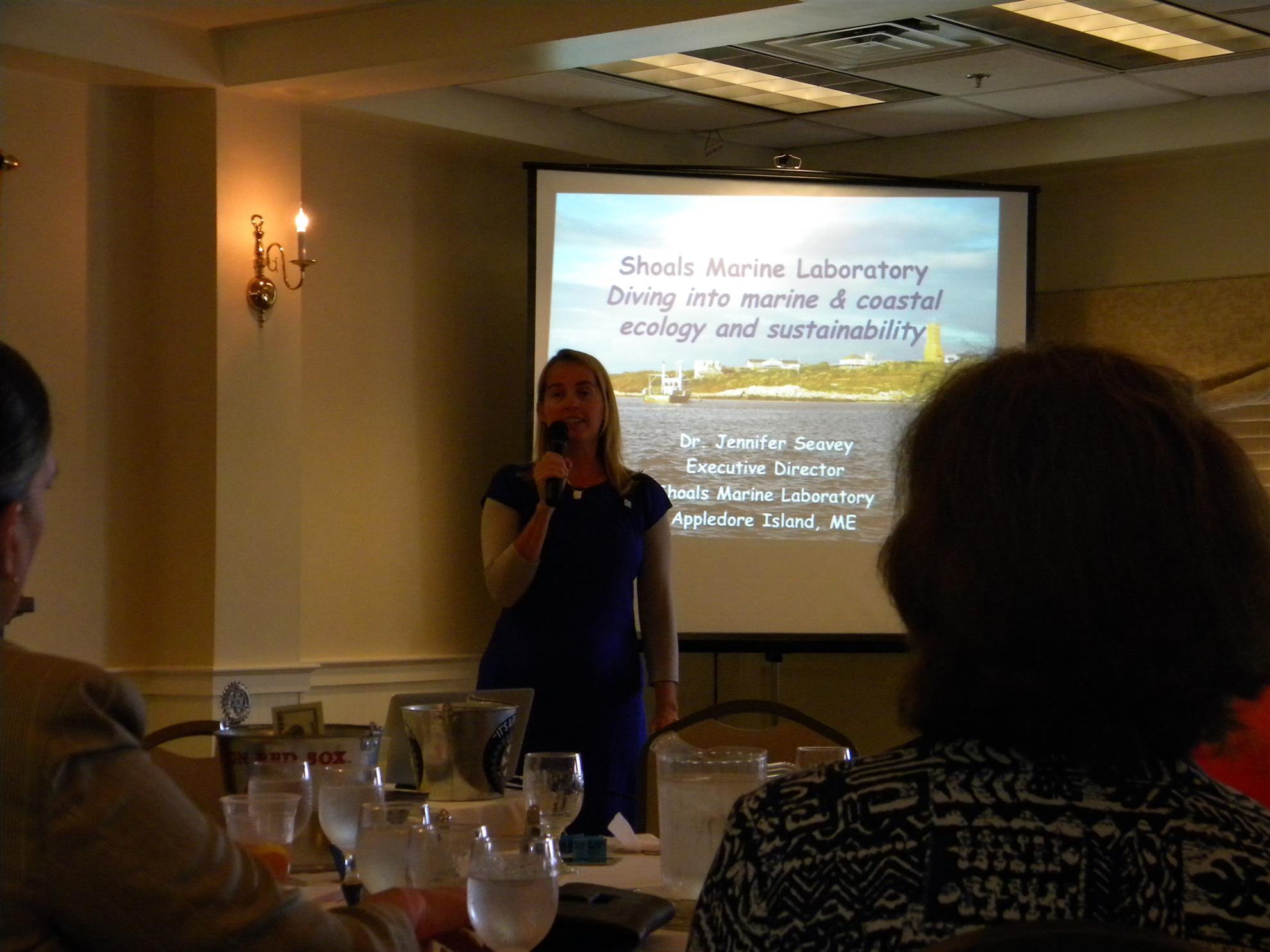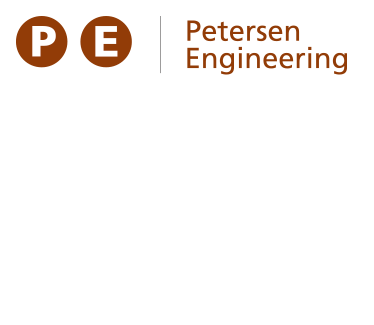Rotary Log for September 24, 2015
Rotary Log for meeting of September 24, 2015
by Mark Lorusso
Photos by Leo Gagnon
What do you get when you mix barnacles, mollusks, sea urchins, crustaceans, marine mammals, fish, birds and marine plant life with graduate students on a self-sustaining island? We could ask the Man from Nantucket this week during the “Hoot.” But we don’t have to wait that long for an answer. Our guest speaker answered that question with an enthralling presentation about the Isle of Shoals and Appledore Island. That’s the address of the world’s largest marine lab! Right here off the coast of New Hampshire. Who said anything about Maine?
Before this enjoyable presentation, President Bill opened the meeting with a call to attention and the Pledge of Allegiance. He eventually remembered we engage in song after the Pledge of Allegiance. President Bill, you always find a way to put a smile on our faces and you succeeded again! John Rice admirably performed the invocation in Reverend Allen’s absence.
Announcements were made and visiting guests and Rotarians acknowledged including Assistant District Governor, Ann Schieber. President Bill gave made an impassioned plea to donate to the PolioPlus program to get us to the finish line.

Please take and fill out a pledge card and help us get the job done. Joanie Dickinson read a thank-you letter from a former member of Interact. The writer has prospered in large part due to the leadership skills learned through the program. Dave Holden reminded us about the Poetry Hoot scheduled for this week.
Happy dollars were given and Fine Master Neal provided us his rendition of Family Feud. He pitted one table against another to answer trivia questions. Winners got to gloat and loser’s had to pay up. No mention will be made about the difficulty of the questions. Brilliant Neal! Especially the mystery envelopes and the poor souls that ventured to open them! John Lyons graced us with his presence, which always makes the Fine Master’s day!
Turning to the presentation, our guest speaker, Dr. Jennifer Seavey, is the director of the Shoals Marine Laboratory. The Lab is a joint project between Cornell University and UNH, and located exclusively on Appledore Island. It opens in spring and continues through the summer months, closing in September. In season, the Lab houses approximately 120 students and staff on the island. By design, the island is structured to be self-sustaining. Appledore is the only island in the Isle of Shoals with a fresh water source.
To maximize efficient use of limited resources, students and staff have created systems and conservation initiatives, such as composting. These strategies eliminate the need for outside intervention to survive on the island. For example, energy in the form of electricity is created with solar and wind power with diesel backup. All essential systems to sustain life on the island, e.g., power and waste, are carefully monitored and studied. Personnel acquire knowledge about these systems and innovate improvements that are shared with the world. Food, perhaps regrettably, is the one item that has to be delivered by boat.
The Lab is home to a diverse group of students that hale from all corners of the world. It offers an immersive experience filled with multiple learning opportunities that focus on a wide variety of research topics. These studies focus on the marine ecosystem as well as the multitude of facets necessary to sustain human life and the lab on the island. Jennifer gave us a brief history of the human presence on the island going back to the 1600’s. These early settlers included some of her own ancestors. Her attachment to the island is a personal one to say the least.

Of course, Celia Thaxter was mentioned along with the artist colony she founded in the 1800’s. The marine lab was started in the 1920’s and taken over by the military in the 1940’s. It returned to civilian use in the 1960’s through the present. Next year will mark its 50th anniversary! There has been meticulous recordkeeping in that span. This includes special subjects, such as intertidal data, which is unique and invaluable.
Each student is assigned tasks along with their research projects. They are responsible for the publication of countless research papers. They have also contributed to the establishment of research protocols used world-wide. The Gulf of Maine has proven to be a fertile ground for climate change research as it is warming faster than 90% of the world’s oceans. One notable finding because of this warming is the migration of marine species from southern waters into the Gulf.
Jennifer next informed us about family-based programs offered on the island. These programs target young children to instill in them an interest in the natural world. Other programs are designed for teenagers located within a 25-mile radius of the island.
Tuition is approximately $5,500 for UNH and Cornell students and about $6,000 for others. The program’s $1.3 million annual budget is funded primarily from tuition along with donations and grants, e.g., NSF, etc.
Our meeting concluded with the 50/50 drawing. Assistant Governor Schieber picked the winning ticket and low and behold--she pulled her own for $87! No match so the pot continues to grow. Next week—the HOOT!
Respectfully submitted, Mark Lorusso
Interested in being a sponsor?
Download the website sponsorship guide
Download the website sponsorship guide













